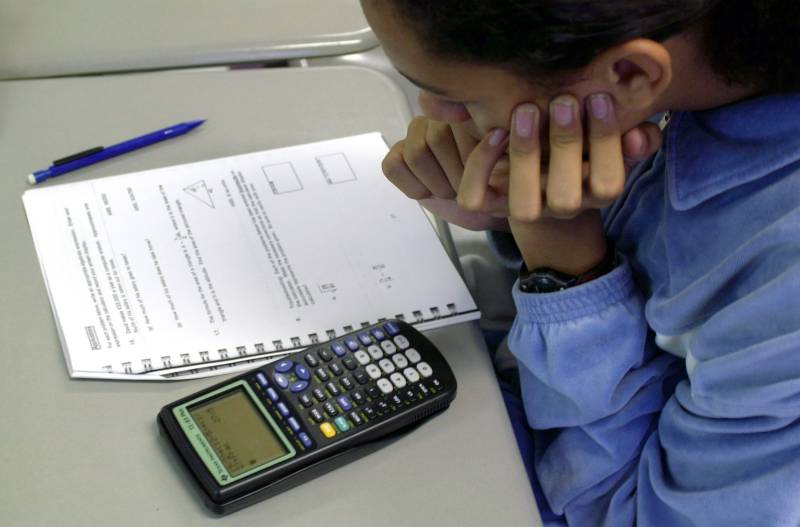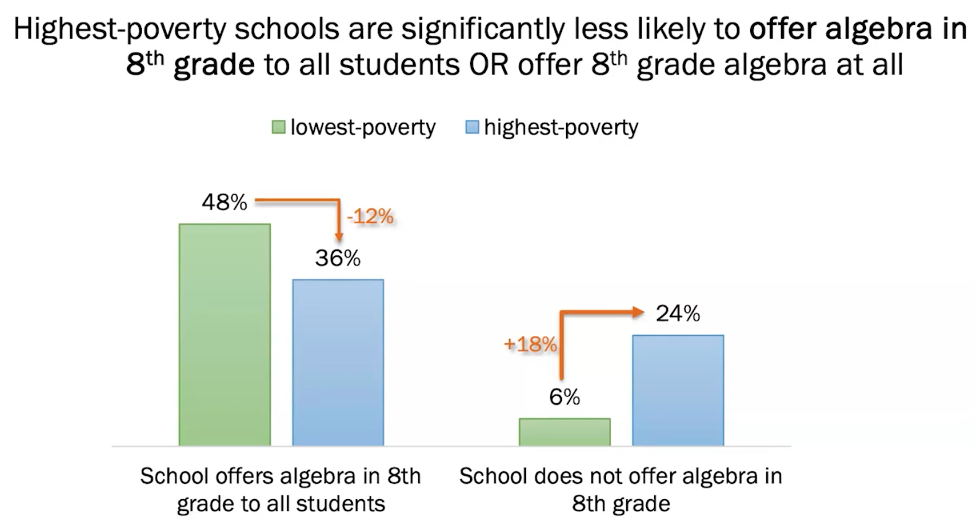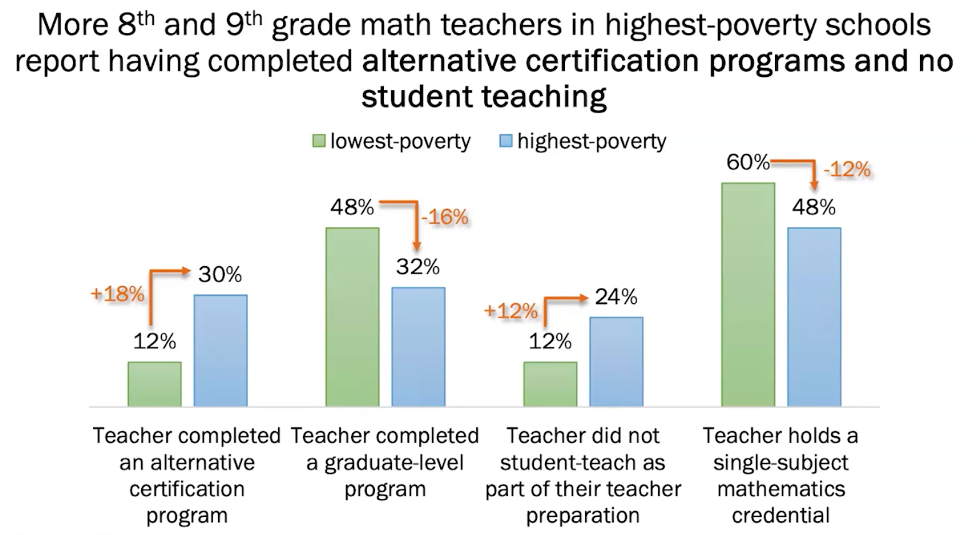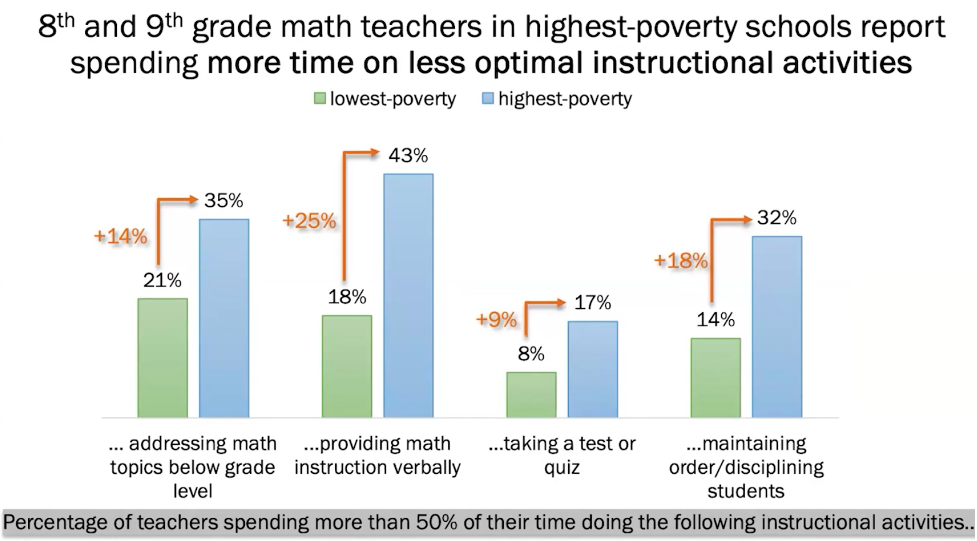Like learning to read by third grade, taking eighth grade math is a pivotal moment in a child’s education. Students who pass Algebra 1 in eighth grade are more likely to sign up for more advanced math courses, and those who pass more advanced math courses are more likely to graduate from college and earn more money. “Algebra in eighth grade is a gateway to a lot of further opportunities,” said Dan Goldhaber, an economist who studies education at the American Institutes for Research, in a recent webinar.
Researchers are trying to understand why so few Black and Hispanic students and low-income students of all races are making it through this early gate. While 25 percent of white students passed algebra in eighth grade in 2021, only 13 percent of Black students did, according to the most recent data from the U.S. Department of Education.
A collection of surveys of teachers and principals, conducted by the research organization RAND, suggests three problems at the poorest middle schools, which are disproportionately populated with Black and Hispanic students. Many don’t offer algebra at all. Their teachers have less training and math expertise, and they describe how they spend classroom time differently than teachers do at wealthier schools. That means the most advanced students at many middle schools in poor communities don’t have the opportunity to learn algebra, and many students at high-poverty schools aren’t receiving the kind of math lessons that could help them get ready for the subject.
In 2023 and 2024, RAND surveyed more than 3,000 school principals and almost 1,000 math teachers across the country. The educators are part of a specially constructed national sample, designed to reflect all public schools and the demographics of the U.S. student population. A working paper analyzing some of the survey findings was released in October 2024. (That analysis was funded by the Bill & Melinda Gates Foundation, which is among the many funders of The Hechinger Report.)
The poorest 25 percent of schools had vastly different course offerings and teachers than the wealthiest 25 percent. Most strikingly, nearly a quarter of the highest poverty schools didn’t offer algebra at all to any eighth graders, compared to only 6 percent of the wealthiest schools.





